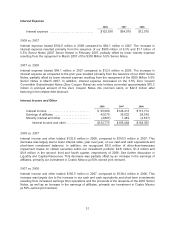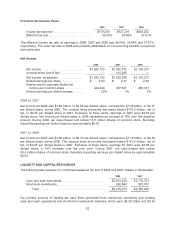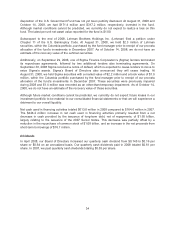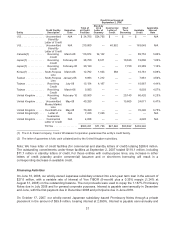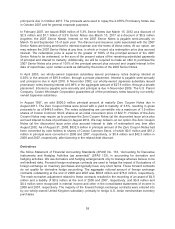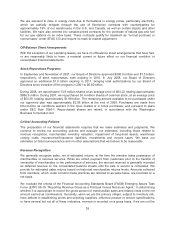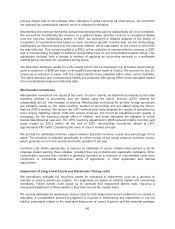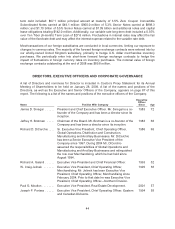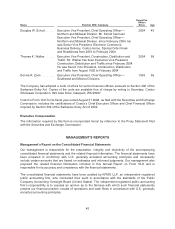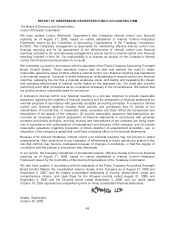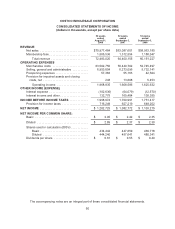Costco 2008 Annual Report Download - page 43
Download and view the complete annual report
Please find page 43 of the 2008 Costco annual report below. You can navigate through the pages in the report by either clicking on the pages listed below, or by using the keyword search tool below to find specific information within the annual report.income at leased locations. These estimates are based on real estate conditions in the markets and
our experience in those markets. We make assumptions about the average period of time it would take
to sublease the location and the amount of potential sublease income for each leased location. We
reassess our liability each quarter and adjust our liability accordingly when our estimates change.
Insurance/Self Insurance Liabilities
We use a combination of insurance and self-insurance mechanisms, including a wholly-owned captive
insurance entity and participation in a reinsurance pool, to provide for potential liabilities for workers’
compensation, general liability, property damage, director and officers’ liability, vehicle liability and
employee health care benefits. Liabilities associated with the risks that we retain are not discounted
and are estimated, in part, by considering historical claims experience and evaluations of outside
experts, demographic factors, severity factors and other actuarial assumptions. The estimated accruals
for these liabilities could be significantly affected if future occurrences and claims differ from these
assumptions and historical trends.
Investments
Investments are reviewed quarterly for indicators of other-than-temporary impairment. This
determination requires significant judgment. In making this judgment, we employ a systematic
methodology that considers available quantitative and qualitative evidence in evaluating potential
impairment of our investments. If the cost of an investment exceeds its fair value, we evaluate, among
other factors, general market conditions, the duration and extent to which the fair value is less than
cost, and our intent and ability to hold the investment. We also consider specific adverse conditions
related to the financial health of and business outlook for the issuer, including industry and sector
performance, operational and financing cash flow factors, and rating agency actions. Once a decline in
fair value is determined to be other-than-temporary, an impairment charge is recorded and a new cost
basis in the investment is established. If market, industry, and/or issuer conditions deteriorate, we may
incur future impairments.
Income Taxes
We adopted FASB Interpretation No. 48, “Accounting for Uncertainty in Income Taxes, an
Interpretation of FASB Statement No. 109” (FIN 48), which sets out criteria for the use of judgment in
assessing the timing and amounts of deductible and taxable items, at the beginning of 2008. The
determination of our provision for income taxes requires significant judgment, the use of estimates, and
the interpretation and application of complex tax laws. Significant judgment is required in assessing the
timing and amounts of deductible and taxable items and the probability of sustaining uncertain tax
positions. The benefits of uncertain tax positions are recorded in our financial statements only after
determining a more-likely-than-not probability that the uncertain tax positions will withstand challenge,
if any, from tax authorities. When facts and circumstances change, we reassess these probabilities and
record any changes in the financial statements as appropriate.
Recent Accounting Pronouncements
In September 2006, the FASB issued SFAS No. 157, “Fair Value Measurements” (SFAS 157), which
defines fair value, establishes a framework for measuring fair value, and expands disclosures about
fair-value measurements required under other accounting pronouncements. It does not change
existing guidance as to whether or not an instrument is carried at fair value. SFAS 157 is effective for
financial statements issued for fiscal years beginning after November 15, 2007, and interim periods
within those fiscal years. In February 2008, the FASB issued FASB Staff Position No. FAS 157-1 (FSP
FAS 157-1), which excludes SFAS No. 13, “Accounting for Leases” and certain other accounting
41


